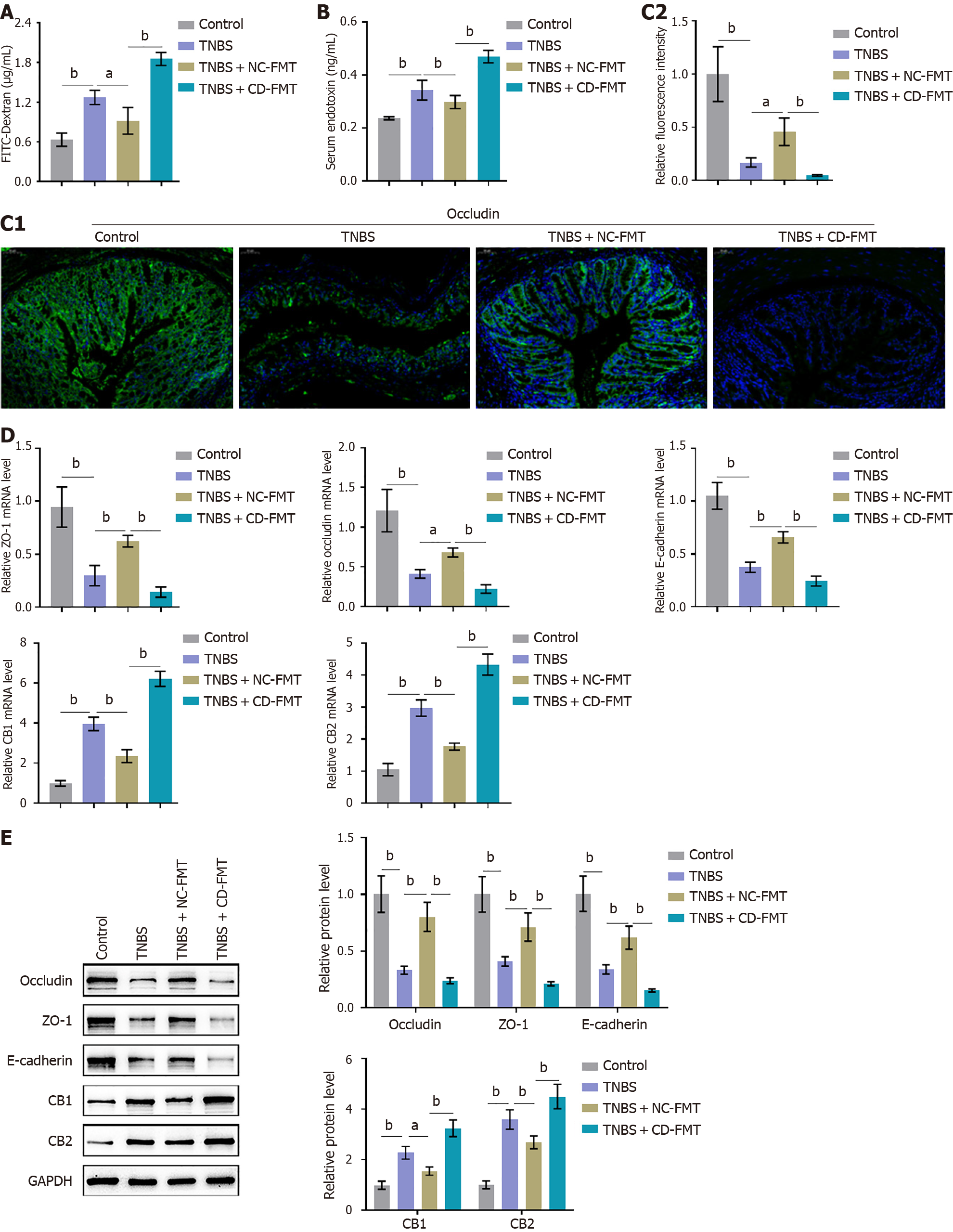Copyright
©The Author(s) 2024.
World J Gastroenterol. Aug 21, 2024; 30(31): 3689-3704
Published online Aug 21, 2024. doi: 10.3748/wjg.v30.i31.3689
Published online Aug 21, 2024. doi: 10.3748/wjg.v30.i31.3689
Figure 3 Effects of gut microbiota from Crohn’s disease patients on intestinal permeability in mice with 2,4,6-trinitrobenzene sulfonic acid-induced Crohn’s disease.
A: Fluorescein isothiocyanate conjugated-dextran assays of intestinal permeability; B: ELISA assays of serum concentrations of lipopolysaccharide-binding protein to determine serum endotoxin levels; C: Immunofluorescent staining of colon tissues to determine the levels of occludin expression (× 150). Average fluorescence density was quantified using ImageJ software (right panel); D and E: Real-time reverse transcriptase-polymerase chain reaction and immunoblotting assays showing the levels of occludin, ZO-1, E-cadherin, CB1, and CB2 mRNA and protein in colon tissues. n = 6 or 3, bP < 0.01 vs control; aP < 0.05, bP < 0.01 vs 2,4,6-trinitrobenzene sulfonic acid (TNBS) alone; bP < 0.01 vs TNBS + NC-fetal microbiota transplantation, by one-way ANOVA with post-hoc Tukey HSD test. TNBS: 2,4,6-trinitrobenzene sulfonic acid; CD: Crohn’s disease; NC: Normal control; FMT: Fetal microbiota transplantation.
- Citation: Wu Q, Yuan LW, Yang LC, Zhang YW, Yao HC, Peng LX, Yao BJ, Jiang ZX. Role of gut microbiota in Crohn’s disease pathogenesis: Insights from fecal microbiota transplantation in mouse model. World J Gastroenterol 2024; 30(31): 3689-3704
- URL: https://www.wjgnet.com/1007-9327/full/v30/i31/3689.htm
- DOI: https://dx.doi.org/10.3748/wjg.v30.i31.3689









